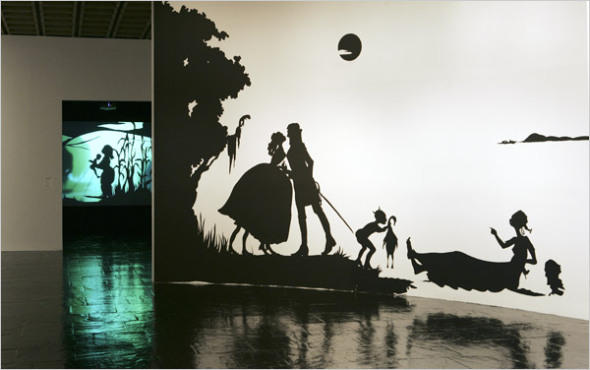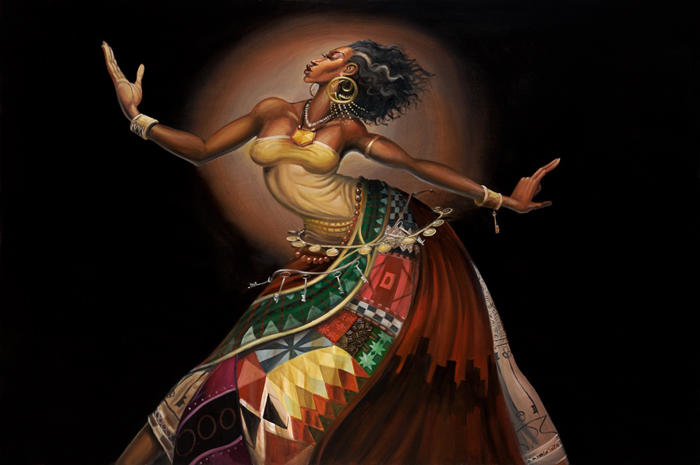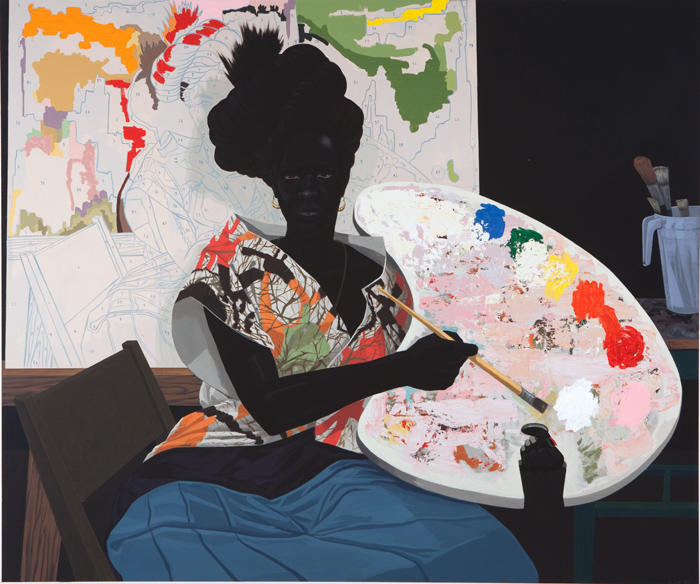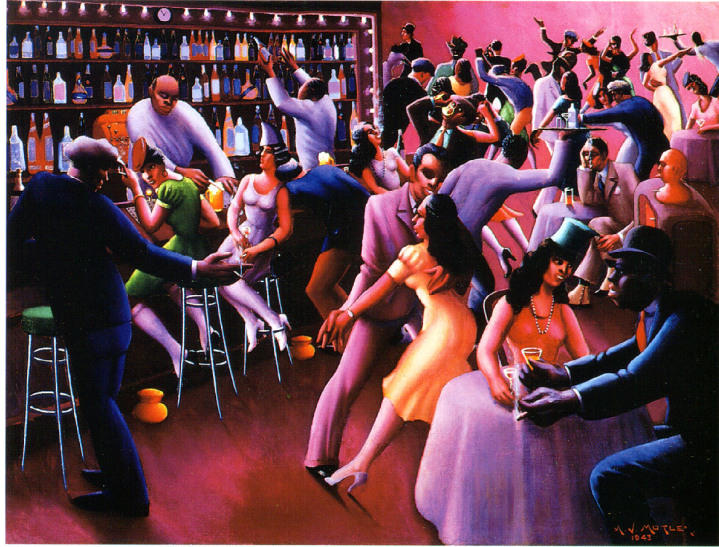Introduction
The Harlem Renaissance, also known as New Negro Movement, was an important cultural movement that started in 1918 to 1925. Its effect was felt several years after as the African tried to express their culture differently. The African American writers, painters, and other artists were keen on rewriting their history in this country.
Racism was affecting them in various ways and they felt that one of the ways of fighting it was through expression in different forms of art. According to Prettejohn (90), Harlem Renaissance was more than a fight against racial segregation. It was an effort by the African Americans, alongside other minority groups, to redefine their identity in the contemporary art. They believed that the best way of protecting their history was to put it down in writings, songs, paintings, and other forms of art.
The movement was so strong that the American society, especially the rich publishers, decided to give them attention. In this study, the researcher will focus on the works of two great African American artists who made a great contribution in redefining the cultural identity of the African Americans in this country. The two artists are Palmer Hayden and Jacob Lawrence.
Palmer Hayden
Palmer Hayden was a painter who was keen on reproducing the life of African Americans in his pieces of art. Born in 1890, Palmer had great skills in painting that earned him fame at a tender age of 21 years when he was in the military. According to Raizman (78), Palmer was a self-trained artist who was keen on the activities happening within his environment.
As a child, he would draw the landscape of his hometown, trying to include all the important details other than the landmarks. When he joined the military, he went on with his artistic work every moment he had the opportunity.
Palmer Hayden as an Activist
According to Prettejohn (113), Palmer was brought up in a humble family. His parents were casual labourer. As a young adult, he was lucky to be recruited in the military, but this did not last long. When he was released from the military, he was forced to work as a janitor in order to earn a living. Life was unfair according to him because he belonged to a race that was considered inferior in the society.
As a young adult, he had become a prolific painter, and whenever he applied to be considered for employment in some of the art firms, they would invite him for interview only to reject him because he was a Black. He decided to express his misgivings of this societal evil in his works. In most of the cases, he would make the paintings just to express his frustration in life. One of the paintings that expressed the societal racial classification is shown in the figure below.

In this painting, a white couple is shown enjoying a romantic moment in the beach. They appear contented with life. The manner in which they are dressed shows that they belong to higher social status. Just next to them is a Black woman and her child. The woman is actually a beggar. She is looking at the White couple with envy.
Her child is playing next to her, oblivious of the fate that is waiting her in her life. In the same painting, another Black woman is depicted trying to sooth the baby to sleep so that she can continue working in the farm. This brings to focus, the kind of struggle these woman had to go through in a society where Blacks were considered second-class citizens. Palmer used his skills, especially during the days of his sunset, to fight racial segregation in the society.
Palmer Hayden on Culture
According to Arnason and Mansfield (39), Palmer Hayden was one of the greatest artists who tried to express the cultural practices of the African Americans in his works. He grew up in a society that was dominated by African Americans. However, their rich neighbours were Whites who hired them for casual jobs. He fell in love with the cultural practices of his people. African Americans had lived together for so long, soon after the end of slavery and slave trade, that they developed an integrated culture.
This became their identity as a one society that not only share the same skin colour, but also a same fate where they were viewed as less deserving members of this society. However, he was very proud of these cultural practices. They demonstrated their identity in this society even though the Whites considered some of them barbaric. The figure below shows an African American woman in traditional attire.

As shown in this painting, the African Americans had unique attire that symbolised their tradition. This painting shows a struggle that African Americans were facing as they tried to hold on to their tradition. This woman is trying as much as possible to dress as a traditional African American woman in a ceremony, most probably in a wedding.
However, the society is heavily influenced by the Western culture, and this is depicted in her dressing. The cultural struggle was witnessed in the Harlem Renaissance as the African American were forced to assume a new identity that was neither their original culture not the culture of the Whites.
They had to take a hybrid culture that was a mix of both. They were taken from Africa hundreds of years ago, but through tales that were told from generation to generation, they had kept this tradition, albeit for some specific ceremonies. Palmer developed paintings of various cultural practices of the African Americans, especially on important occasions such as during weddings or burial ceremonies.
Jacob Lawrence
Jacob Lawrence was a famous African American painter of the 20th century. Unlike Palmer Hayden, Lawrence grew up in a family that was supportive. Both parents were working and they were keen on ensuring that Lawrence acquired formal education. However, Lawrence dropped out of school when he was 16 years and started working in a printing shop.
It is at this facility that he realised that he had a great potential in painting. He luckily secured a fully paid scholarship to study at the American Artists School where he met other great painters. After graduating from this institution, Lawrence developed a unique interest in exploring the history of African Americans. He was only 21 years when his masterpiece became very popular at exhibitions all over the United States.
He depicted the struggle of the African Americans as they struggled to free themselves from slavery, especially in southern states. General Toussaint L’Ouverture of Haiti was one of the people who were greatly moved by these paintings done by Lawrence. He considered the paintings an identity of the African Americans who were suffering from the chains of racial discrimination. He particularly loved the paintings that depicted him leading an army of ill-trained African Americans against a superior military of the Whites.
According to Raizman (47), most of the paintings done by Lawrence were based on historical accounts. He was trying to rewrite history of the African Americans through his paintings. The figure below is one such painting based on an oral tale of a woman with a broken heart.

Many African American communities had different tales that were not only meant to entertain, but also to inculcate positive culture among members of the society. Love stories were not just meant to make the audience learn how to lead their love lives. They also expressed the importance of protecting the loved ones from heartbreaks.
In the painting above, the woman is sad, and the piece of art in her hand explains the reason why she feels this way. She holds a curving of a heart, a symbol of love, with a section of it broken. The society at this time, and even today, believed that the heart was a symbol of love, and once the love was broken, there remains a permanent scar in the heart. This is what is depicted in this drawing. It explains the reason why the woman appears to be very sad.
According to Arnason and Mansfield (56), in the era of Lawrence, the American society was slowly experiencing a transformation, as African Americans were not regarded as citizens with equal rights just as the Whites. Although the transformation was slow, the society realised that the potential that the country had could be enhanced through unity.
This was in the 1960s and 1970s when Martin Luther King and many other human rights activists worked tirelessly to ensure that the American minorities were given equal rights to that of the White majorities. The society had been transformed to the level where it was common to find African Americans and Whites partying together as shown in the figure below.

As shown in the figure above, the society had become very tolerant and it was common for members of different races to engage in social events without prejudice. Lawrence was keen not to miss this great transformation in his drawings. In the picture above, we see an African American seated at the same table with a White woman. They are probably dating, something that was unheard of in the past. Asians and other ethnic groups also attend the party as demonstrated in the painting. Race seems not to be a barrier to be together and celebrate as a united society.
Conclusion
The Harlem Renaissance was an important historic stage in the lives of African Americans. They had suffered for a long time because they were racially segregated. However, this was a time of transformation where their identity was changed, from slaves and second-class citizens, to American citizens with all the rights enjoyed by the Whites. Artists such as Palma Hayden and Jacob Lawrence documented this historic transformation through their paintings.
Works Cited
Arnason, Havard, and Elizabeth Mansfield. History of Modern Art: Painting, Sculpture, Architecture, Photography. New York: Cengage, 2013. Print.
Arnason, Havard. History of Modern Art: Painting, Sculpture, Architecture, Photography. New York: Prentice-Hall, H. N. Abrams, 2006. Print.
Boime, Albert. A Social History of Modern Art. Chicago: University of Chicago Press, 1999. Print.
Prettejohn, Elizabeth. The Modernity of Ancient Sculpture: Greek Sculpture and Modern Art from Winckelmann to Picasso. London: Tauris, 2012. Print.
Raizman, David. A History of Modern Design: Graphics and Products Since the Industrial Revolution. London: Laurence King, 2003. Print.
Temkin, Ann. Abstract Expressionism at the Museum of Modern Art: Selections from the Collection. New York: Museum of Modern Art, 2010. Print.